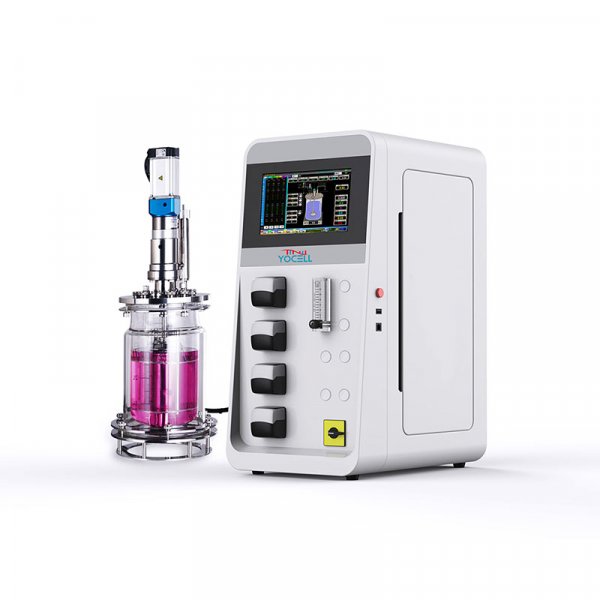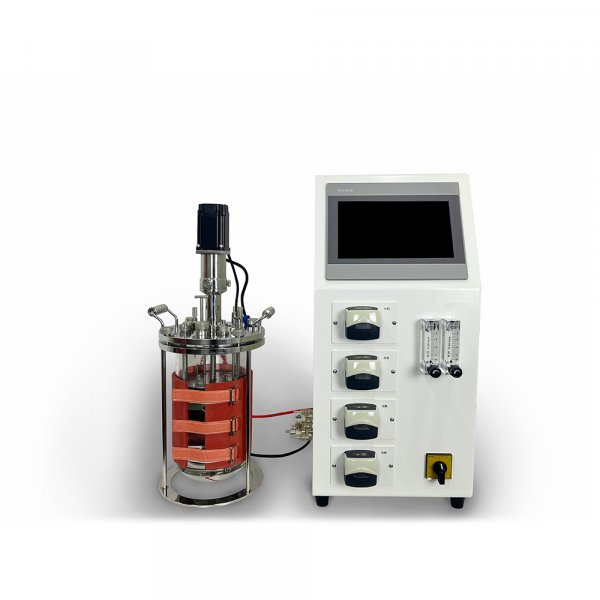High pressure homogenizers are specialized in the pharmaceutical industry for size reduction, mixing and stabilization of dispersions, including coarse emulsions, microemulsions and suspensions. It generates high localized stresses that lead to dramatic particle size reduction. Continuous production under large-scale conditions makes this type of equipment suitable for scale-up methods. In high pressure homogenizers, liquids are passed through narrow gaps at high pressure. The liquid fed to the homogenizer can be a coarse emulsion, a microsuspension or a dispersion, generally referred to as a premix. Depending on the type of equipment available, high pressure homogenizers operate at pressures ranging from 50 - 500 MPa. Of these, homogenizers capable of operating at pressures of 200 MPa and above are classified as Ultra High Pressure Homogenizers (UHPH). Units of pressure include: MPa, psi, bar. homogenizing pressure is necessary to force liquids through narrow gaps, and the sudden passage of premixes through narrow chambers at high pressures is the cause of size reduction and droplet breakage.
As the liquid passes through the high pressure homogenizer, the liquid assembles molecules in different ways. These molecules interact with the liquid and solid at the interface, changing the molecular dynamics of the liquid. The molecular dynamics of the liquid provides information about the coexistence of many interfacial phenomena that occur simultaneously or in parallel. The study of such interfacial phenomena is important for maintaining consistent product quality, especially for the development of novel drug delivery systems. Although nano drug delivery systems are known for their unique features, such as protection of drug modules and controlled release through encapsulation, dual drug loading, size reduction, and increased surface area, a large number of batch failures occur at scale-up. The reason for this lies in the lack of attention to the various process parameters and the lack of study of their interdependence. Therefore, it is critical to use a design of experiments (DoE) and quality by design (QbD) approach to obtain consistent and identical parameters for each batch and to study the interdependencies between the parameters.
The need to emphasize the understanding of the process parameters of the high-pressure homogenizer is due to the fact that these variables can have an impact on many physicochemical characteristics, including size, surface charge, and polydispersity index (PDI), which affects stability and cellular uptake. Nanoparticles can be optimized for their various physicochemical characteristics, resulting in optimized outputs in terms of drug release from nanosuspensions, nanoemulsions, or self-nanoemulsifying drug delivery systems.
Parameters affecting the process
Homogenizing pressure
Homogenizing pressure is the pressure that forces a liquid through a narrow gap, ranging from 10 to 500 MPa. Droplets undergo shear, cavitation and turbulence, which breaks them up into smaller droplets. Droplets will only break up if there is enough shear to overcome the Laplace pressure. An increase in homogenizing pressure creates stronger vortices, further reducing the droplet size. An increase in pressure produces a higher pressure drop, which easily overcomes the Laplace pressure and leads to further size reduction. Thus, homogenizing pressure directly affects particle size through turbulence, making it a critical process parameter. The force density becomes an important parameter to be adjusted when obtaining the desired average particle size.
Number and duration of cycles
Under specified pressure conditions, the collected premix is recirculated through the narrow gap again and one cycle is completed. The droplet size is further reduced as the liquid again undergoes shear, cavitation and turbulence. Therefore, the number of cycles/recycles is directly related to the average diameter size under constant pressure conditions. The time required to complete a cycle depends on the viscosity of the liquid. Due to the reduction in droplet size, after two to three cycles, the viscosity of the emulsion decreases, thus reducing the time required to complete the cycle.
fluid dynamics
In some product lines, the hydrodynamics inside pilot and production scale homogenizers are learned slightly differently because of the higher clearance heights of homogenizers used for production scale. For production or pilot-scale high-pressure homogenizers with three- or five-piston pumps, the pulses are very small and cause only slight oscillations in the flow field. This does not affect efficiency and means that studies on production and pilot scale high pressure homogenizers justify the continuous inflow. In the case of laboratory scale equipment, the pulses are large enough and do change the flow field. The pulses are also expected to lead to more efficient breakdown when all other parameters are held constant, as the flow velocity is higher during passage through the gap. Therefore, the variability of each scale should be considered when converting results from laboratory and production scale high pressure homogenizers.
High Pressure Homogenizer for Pharmaceutical Applications
Nano particle size reduction
High pressure homogenizers are mainly used in the pharmaceutical industry for particle size reduction as they are able to use pressure to break down particles/spheres in premixes into particles with a uniform size range. It is often the preferred technology because of its suitability for aqueous and non-aqueous feeds and its ability to overcome the drawbacks of traditional ball milling methods such as high amorphization, polycrystallization and metal contamination. Reducing particle size helps to reduce the required dose, thereby reducing side effects, and can improve bioavailability and dissolution characteristics.
Improve solubility and bioavailability
Previous studies have reported the use of high pressure homogenizers to improve the dissolution rate and bioavailability of BCSⅱ drugs (e.g., spironolactone, budesonide, and omeprazole) by effectively reducing the particle size to the nanoscale. Meanwhile, the use of a high-pressure homogenizer to formulate nifedipine nanoparticles was successful in increasing the dissolution rate in addition to increasing the saturation solubility. In addition, a study prepared celecoxib nanoparticles using antisolvent precipitation and high-pressure homogenizer techniques, which showed that celecoxib samples obtained via high-pressure homogenizer technique had better dissolution properties compared to antisolvent precipitation. The enhanced dissolution properties were attributed to the conversion into more stable crystalline form by high pressure homogenizer treatment. Low water soluble drugs have lower bioavailability and dissolution. In this case, particle size reduction is an effective way to improve bioavailability. For nanoemulsions, loading of drugs within the oil phase of O/W nanoemulsions showed enhanced absorption. Due to the presence of nanodroplets, the contact area of the nanoemulsion with the mucosa of the gastrointestinal tract was increased and its absorption was significantly higher than that of the crude emulsion.
Inhibition of crystal growth and decomposition of large agglomerates
While the addition of solubilizers is the primary method for reducing crystal growth and particle aggregation, Baxter invented a combination technique called "NANOEDGE". In this technique, precipitated nanoparticles are immediately placed in a high-pressure homogenizer to inhibit crystal growth and destroy large aggregates. It has been shown that high-pressure homogenization can break down elongated particles (micron-sized) into smaller particles (nanosized), resulting in oblate and rod-shaped nanoparticles. Reduced droplet recombination The two regions of active homogenization are described as the narrow zone and the recombination zone. In the narrow zone, droplets break up rapidly with little recombination, and in the recombination zone, droplet interactions begin to dominate and turbulence intensity decreases. Effective droplet size control is the result of a balance between fragmentation and recombination, which can be reduced by
Addition of emulsifiers/surfactants - The addition of emulsifiers/surfactants overcomes the thermodynamic instability by stabilizing the newly broken droplets by covering them to avoid agglomeration. Depending on the residence time of the emulsion in the dispersion zone, different emulsifiers/surfactants can be used.
Optimize the energy input to the emulsification process - Within a certain range, droplet size cannot be reduced, even with lower emulsifier efficiency. Over-processing can lead to poor droplet stability.
Concentration of Dispersed Phases - Increasing concentration of dispersed phases increases droplet size and makes the droplet breakdown process difficult. The effectiveness of the emulsifier in covering the newly broken droplets fails.
Temperature - The use of thermal homogenization process increases the velocity of the drug particles, which enhances drug distribution and size reduction. It is mainly used for lipid carriers. However, it has certain drawbacks such as limited use in case of thermally unstable substances, degradation, uncertainty in lipid conversion. Cold homogenization can overcome these disadvantages. Each of these two methods has its own significance and can be used alone or in combination to obtain the desired size reduction.
Improved drug loading capacity and encapsulation efficiency
Nanostructured lipid carriers containing dehydroinosine have been prepared by combining conventional homogenization with cold and hot homogenization. Due to the hydrophilic nature of the drug, the drug loading capacity and encapsulation efficiency of dehydroinosine-loaded nanostructured lipid carriers prepared using a high-pressure homogenizer was very low. However, the values of loading capacity and encapsulation rate of dehydroinosine increased to 3.39 ± 0.63% and 51.58 ± 1.31% in cold and hot homogenization. This indicates a significant increase in its solubility in the lipid phase, which was achieved by reducing its particle size using hot and high pressure homogenization methods. Reduced vesicle aggregation of liposomes Small unilamellar liposome vesicles are known for providing enhanced plasma lifetime and achieving greater tissue localization. High-pressure homogenizers are widely used as an emerging technology to reduce vesicle aggregation, which reduces the number of multilayered liposomes. Examples include albumin-conjugated paclitaxel-based drug delivery systems, which use high-pressure homogenizers to load albumin and paclitaxel. In addition, in the preparation of vesicular phospholipid gels, the harsh pressure conditions of a high-pressure homogenizer are used to hydrolyze the phospholipids to generate small monolayer vesicles.
Preparation of colloidal formulations using the high pressure homogenizer principle
The premixes used in the preparation of nanoparticles with a high pressure homogenizer can be coarse emulsions, dispersions or suspensions. They are prepared by mechanical shearing or by providing physical energy to disperse a liquid phase (dispersed phase) into another phase (dispersion medium). For suspensions and dispersions with large particle sizes, they can be pre-treated with high-energy systems such as ultrasound, high shear homogenizers or membrane emulsification systems before entering the high-pressure homogenizer. Pretreatment of premixes is necessary because large particles may clog the gap.
In a high pressure homogenizer, this premix is forced under high pressure through a narrow gap from the inlet chamber to the outlet chamber. The collected homogenized product can be recirculated again into the feeder to keep the homogenization process going to obtain further particle size reduction. The final product obtained is then lyophilized. In the development of lipid nanoparticles, the applicability of high pressure homogenizers has made them preferred over other methods. Hot homogenization and cold homogenization methods have achieved good results in the development of nanoparticles.
Summarize
By using a high pressure homogenizer to formulate nanoparticles, it is possible to tailor the different physicochemical properties to enhance the stability, effectiveness and delivery of the active ingredient (API). The added advantage of a high pressure homogenizer is that it utilizes two forces, one due to mechanical action and the other due to pressure to process the particles, which makes it possible to obtain consistent, uniform particle sizes. Processing steps with molecular fluids, including impact, cavitation, turbulence or shear forces, can affect the formation of particles with uniform size and enhance stability. The results of high-pressure homogenizer processing can affect many desired approaches, including bioavailability or improved targeting capabilities. These factors are important for drug delivery systems in nanomedicines, as obtaining a small size with the desired surface area plays a key role in effectiveness. High-pressure homogenizer technology will have a broader impact at the industrial and research level thanks to significant improvements in the functionality of high-pressure homogenizers, allowing flexibility and functionality in the desired drug application.
References: G. Amasyaa, B. Aksub, U. Badillia, et al., QbD guided early pharmaceutical development study: Production of lipid nanoparticles by high pressure homogenization for skin cancer treatment. international Journal of Pharmaceutics, 2019.
K. S. Yadav, K. Kale, High Pressure Homogenizer in Pharmaceuticals: Understanding Its Critical Processing Parameters and Applications. journal of Pharmaceutical Innovation, 2019.
R.Levy, Z.Okun, A.Shpigelman, High-Pressure Homogenization: Principles and Applications Beyond Microbial Inactivation. Food Engineering Reviews, 2020.



